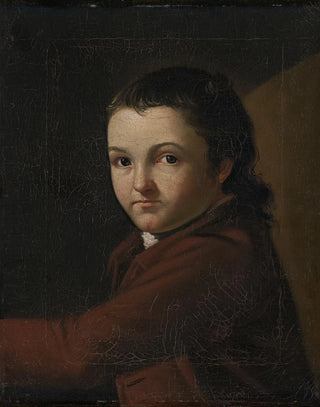Art print | Jabez Huntington Jr, the artist's nephew - John Trumbull


View from behind

Frame (optional)
In the fascinating world of American art, the artwork "Jabez Huntington Jr Neveu de l'artiste - John Trumbull" stands out for its profound visual and historical impact. This representation, imbued with the finesse of a classic portrait, immerses us in the intimacy of an emblematic 18th-century figure. Through the viewer's gaze, the painting evokes a time when art was both a means of personal expression and a reflection of sociopolitical realities. The art print of this piece allows for appreciation not only of Trumbull's talent but also of the cultural heritage he left behind.
Style and uniqueness of the work
John Trumbull's style is characterized by striking realism and meticulous attention to detail, which are evident in every brushstroke of "Jabez Huntington Jr Neveu de l'artiste." Trumbull, renowned for his portraits and historical scenes, manages to capture the very essence of his subjects. In this work, the posture and expression of Jabez Huntington are carefully crafted, revealing a personality that is both strong and thoughtful. The color palette, dominated by rich and warm tones, contributes to the emotional depth of the piece, while the lighting, subtly manipulated, highlights facial features and textures of clothing. Every element of the painting, whether drapery or accessories, is chosen with care to enrich the visual storytelling, making this piece a true ode to individuality.
The artist and his influence
John Trumbull, often regarded as the painter of the American Revolution, masterfully combined art and history. His career, rich and varied, was marked by a desire to document significant events of his time while celebrating the figures who shaped the nation. Trumbull witnessed the fight for independence and skillfully transcribed these crucial moments through his art. His influence extends far beyond his own era, inspiring many artists who followed in his footsteps. By integrating historical elements into his portraits, he paved the way for a new approach

Matte finish

View from behind

Frame (optional)
In the fascinating world of American art, the artwork "Jabez Huntington Jr Neveu de l'artiste - John Trumbull" stands out for its profound visual and historical impact. This representation, imbued with the finesse of a classic portrait, immerses us in the intimacy of an emblematic 18th-century figure. Through the viewer's gaze, the painting evokes a time when art was both a means of personal expression and a reflection of sociopolitical realities. The art print of this piece allows for appreciation not only of Trumbull's talent but also of the cultural heritage he left behind.
Style and uniqueness of the work
John Trumbull's style is characterized by striking realism and meticulous attention to detail, which are evident in every brushstroke of "Jabez Huntington Jr Neveu de l'artiste." Trumbull, renowned for his portraits and historical scenes, manages to capture the very essence of his subjects. In this work, the posture and expression of Jabez Huntington are carefully crafted, revealing a personality that is both strong and thoughtful. The color palette, dominated by rich and warm tones, contributes to the emotional depth of the piece, while the lighting, subtly manipulated, highlights facial features and textures of clothing. Every element of the painting, whether drapery or accessories, is chosen with care to enrich the visual storytelling, making this piece a true ode to individuality.
The artist and his influence
John Trumbull, often regarded as the painter of the American Revolution, masterfully combined art and history. His career, rich and varied, was marked by a desire to document significant events of his time while celebrating the figures who shaped the nation. Trumbull witnessed the fight for independence and skillfully transcribed these crucial moments through his art. His influence extends far beyond his own era, inspiring many artists who followed in his footsteps. By integrating historical elements into his portraits, he paved the way for a new approach






